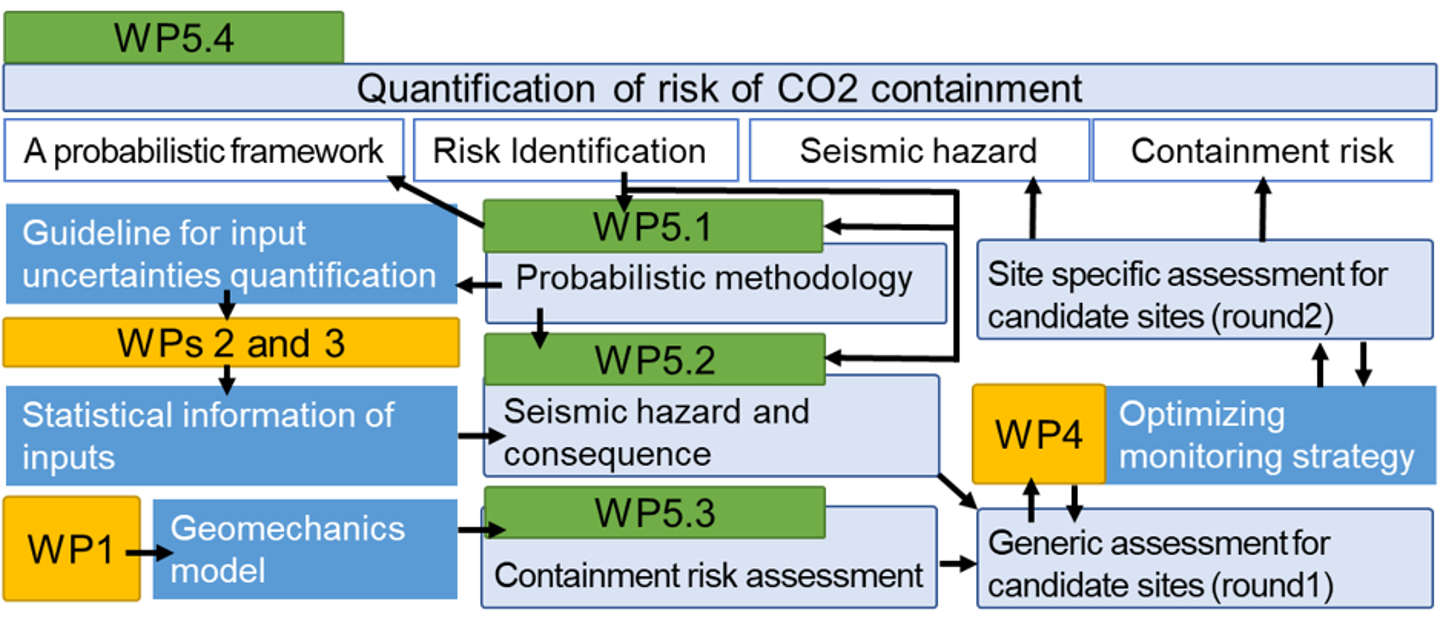Work Package 5 : Risk quantification

WP lead: Tine B. Larsen, GEUS. E-mail: tbl@geus.dk
In WP5 the knowledge and concepts developed throughout the project will converge and be integrated into a new interdisciplinary, quantitative methodology. The main objective is to develop a new innovative approach to evaluate quantitatively the containment leakage risks associated with CO2 sequestering.
The results and methods developed during the project will be implemented, as well as know-how from relevant projects and literature. A new methodology will be developed and will move the state of art by including explicitly in the analysis the uncertainty in all parameters and in the method uncertainty, by estimating the risk quantitatively, and by validating using North Sea case studies.
Task 5.1 – Probabilistic description of stress-field related containment integrity
A probabilistic methodology that can stochastically describe the containment integrity associated with the stress field will be developed to include the uncertainties in the in-situ stress conditions, both actual and as modelled. To properly consider the uncertainties in the stress conditions, initial effort will focus on the identification of hazards and the selection of the optimal methods for integrating the stress modelling outputs from WP1 and WP2.
Task 5.2 – Seismic hazard and consequences of induced seismicity
A systematic study of induced seismicity will be used to assess key controls on fault reactivation. Probabilistic seismic hazard analysis (PSHA) will be performed on the improved natural seismicity data. A method for evaluating the risk for induced seismicity will be developed based on natural seismicity, known/suspected induced seismicity, state of stress, rock rheology and known faults. Ground motion prediction equations (GMPEs) will also be developed for sites. This method can be extended to develop a hazard informed traffic light scheme based on monitoring to allow operators a simple and effective way to manage risk due to induced seismicity.
Task 5.3 – Quantitative modelling of CO2 storage containment risks
Building on previous CCS work and established techniques in the nuclear industry for the quantitative risk modelling of fission product release from containment and, separately, seismic hazards, the aim of this task is to develop and trial a fully quantitative CO2 containment risk evaluation method.
The scope of modelling will cover the wholly geological aspects of the generic bowtie developed by the DETECT-ACT project. During an initial round (Round 1), for each of the four fundamental causes relevant to the SHARP project (faults and fractures, induced seismicity, natural seismicity and stress/pressure), a generic CO2 releases diagram will be derived that’s consistent with geological aspects of the DETECT bowtie and suitably representative of key geological features.